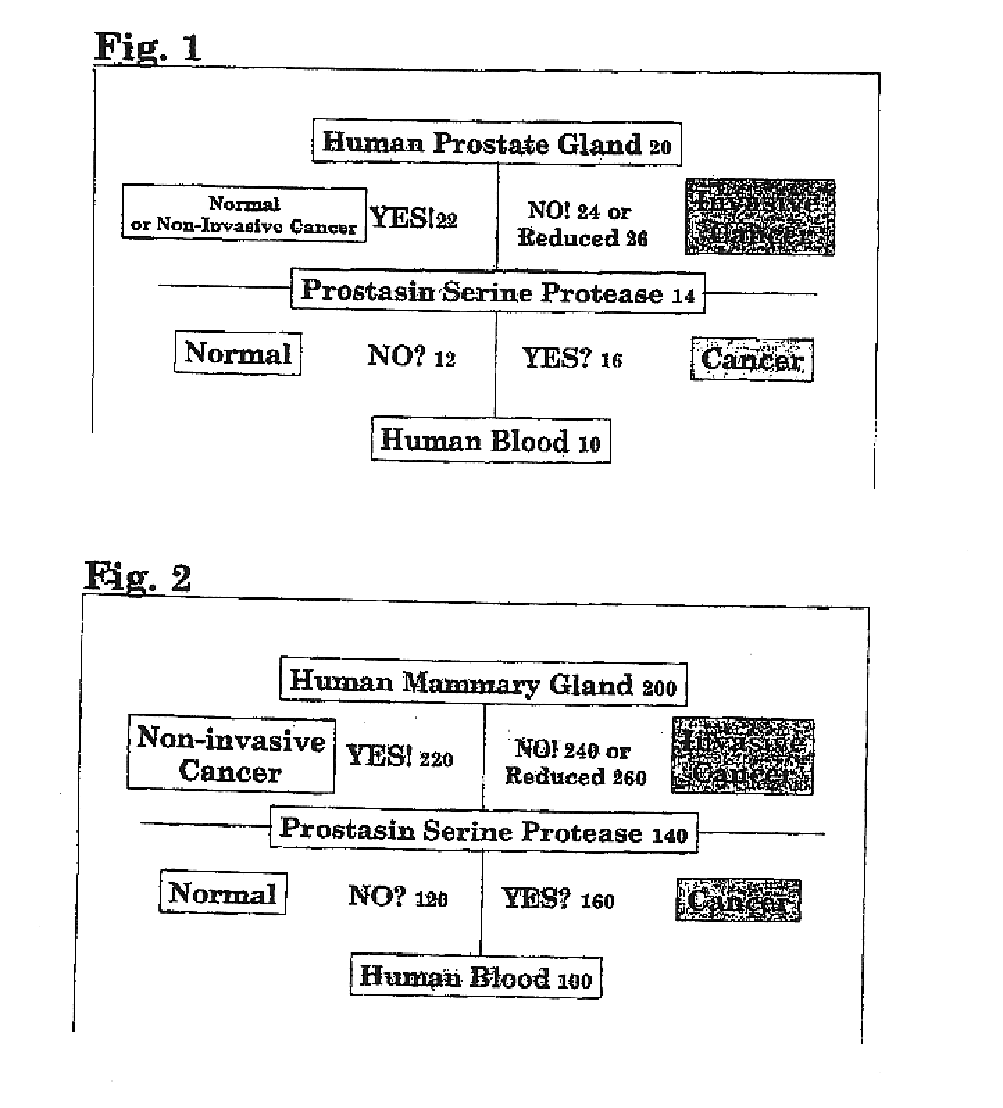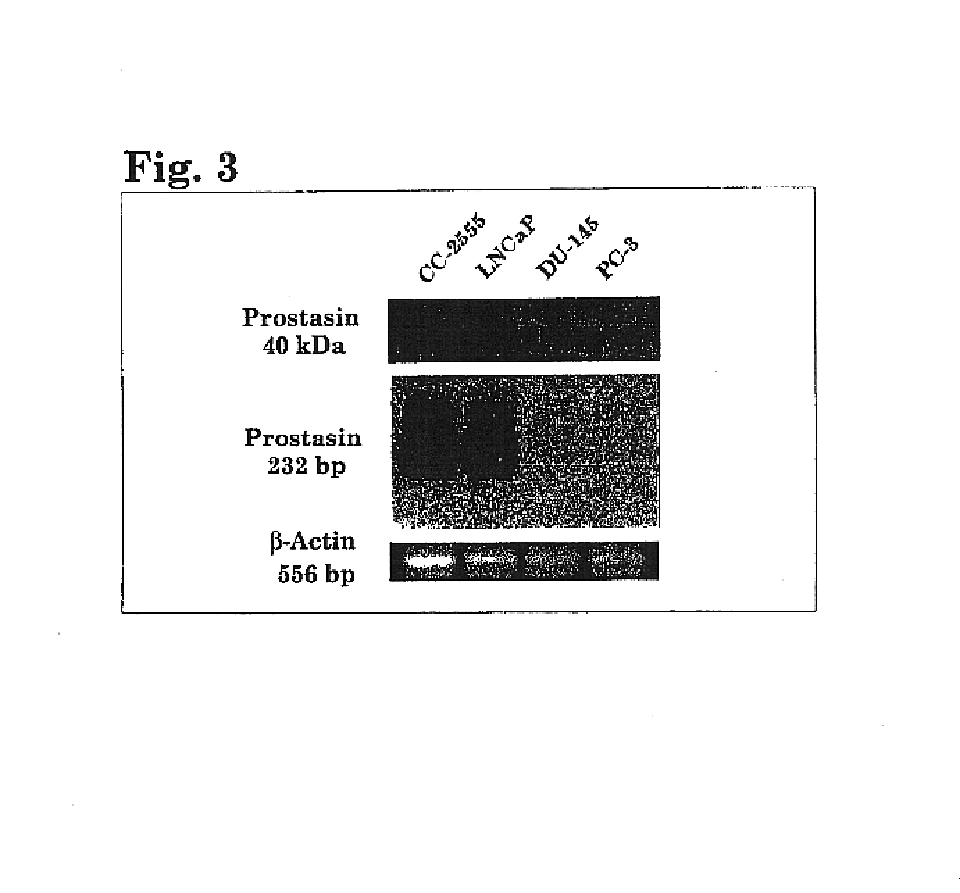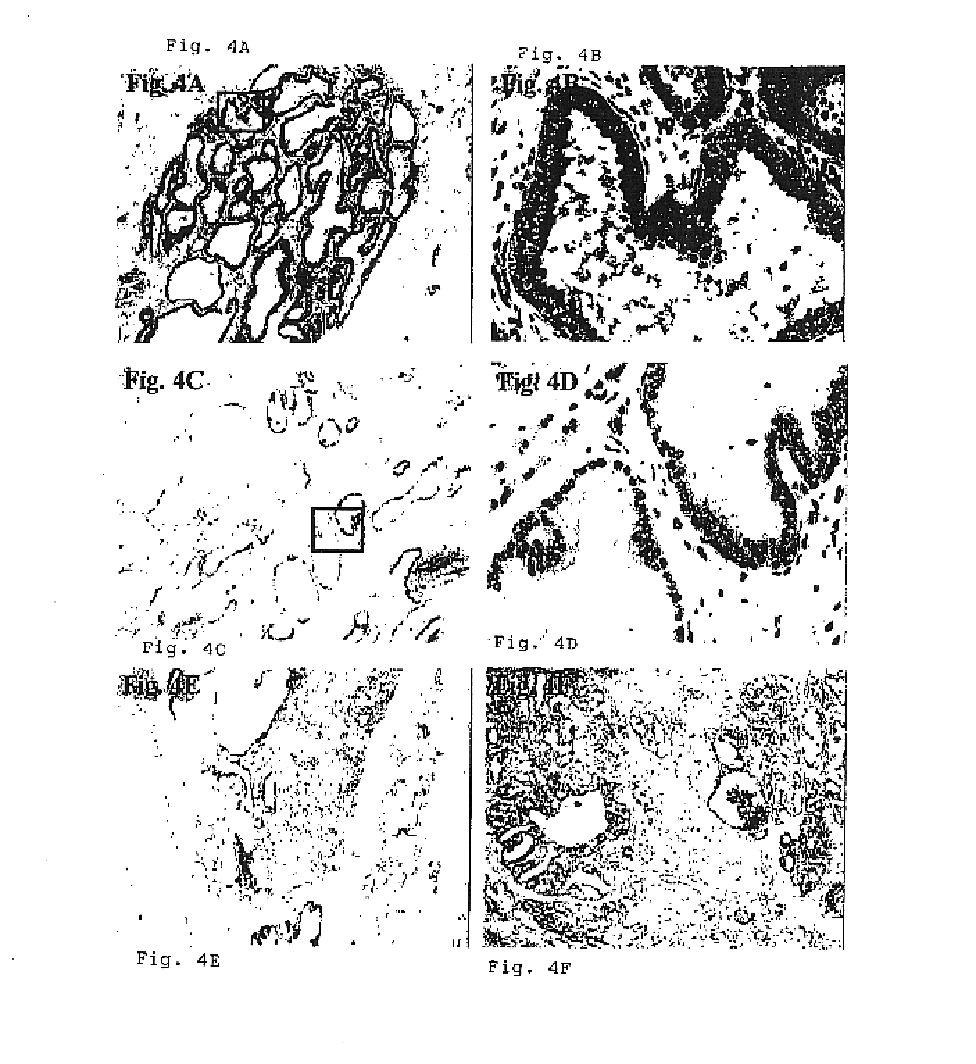Method of identifying and treating invasive carcinomas
a technology of invasive carcinoma and invasive potential, which is applied in the field of invasive carcinoma identifying and treating methods, can solve the problems of poor understanding of the mechanisms of the prostate cancer invasion process, limited ability to predict the acquisition of invasive potentials by a prostate cancer, and complex mechanisms leading to the development of a prostate cancer. to achieve the effect of reducing the invasiveness of human carcinoma
- Summary
- Abstract
- Description
- Claims
- Application Information
AI Technical Summary
Benefits of technology
Problems solved by technology
Method used
Image
Examples
example 1
[0072]Prostasin Promoter DNA Methylation
[0073]Cell Culture Maintenance
[0074]All cell culture media, sera and supplements were purchased from Life Technologies (Gaithersburg, Md.) except for those otherwise noted
[0075]A normal human mammary epithelial cell primary culture (catalog number CC-255) was obtained from Clonetics (San Diego, Calif.) and maintained in the mammary epithelial basal medium (supplemented with bovine pituitary extract, recombinant human epidermal growth factor, bovine insulin and hydrocortisone) according to the suppliers protocols. The Culture was kept at 37° C. with 5% CO2 and used for experiments at the 9th overall passage.
[0076]Human breast carcinoma cell lines MCF-7, MDA-MB—453, MDA-MB-231 and MDA_MB-435 were obtained from the American Type Culture Collection (ATCC, Manassas, Va.). The MCF-7 cells were maintained in DMEM supplemented with 10% FBS and kept at 37 for experiments at the 9th overall passage.
[0077]Human breast carcinoma cell lines MCF-7, MDA-MB—4...
example 2
[0109]The same methylated sites investigated in example I above in breast cancer cell lines, were investigated in human prostate cancer cell lines and human prostate epithelial cells. All methods were the same, except as follows:
[0110]Cell Culture Maintenance
[0111]A normal human prostate epithelial cell (PrEC) primary culture (PrEC primary culture (Catalog Number CC-2555) was obtained from Clonetics (San Diego, Calif.) and maintained in the supplied medium (prostrate epithelial cell basal medium, containing bovine pituitary extract, hydrocortisone, human epidermal growth factor, epinephrine, transferring, insulin, retinoic acid, tri-iodothyronine, gentamicin, and amphotericin). The culture was kept at 37° C. with 5% CO2 and used for experiments at the overall passage.
[0112]Human prostate cancer cell lines LNCAP, DU-145 and PC-3 were obtained from the American Type Culture Collection (ATCC, Manassas, Va.). The PC-3 cells were maintained in F-12K medium supplemented with 10% fetal bov...
PUM
| Property | Measurement | Unit |
|---|---|---|
| Fraction | aaaaa | aaaaa |
| Fraction | aaaaa | aaaaa |
| Fraction | aaaaa | aaaaa |
Abstract
Description
Claims
Application Information
 Login to View More
Login to View More - R&D
- Intellectual Property
- Life Sciences
- Materials
- Tech Scout
- Unparalleled Data Quality
- Higher Quality Content
- 60% Fewer Hallucinations
Browse by: Latest US Patents, China's latest patents, Technical Efficacy Thesaurus, Application Domain, Technology Topic, Popular Technical Reports.
© 2025 PatSnap. All rights reserved.Legal|Privacy policy|Modern Slavery Act Transparency Statement|Sitemap|About US| Contact US: help@patsnap.com



